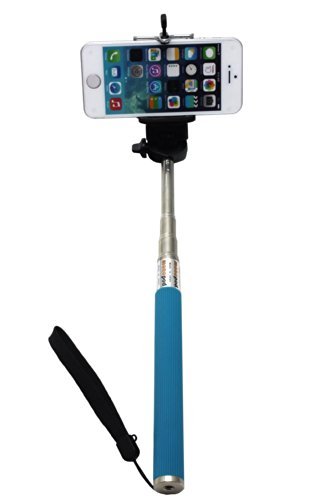Apparently it has a bunch of scientific uses (like calibrating space telescopes etc) but the real question is, when is Michael Harding going to make it into a tube paint and how much?
Link here: Vantablack Article from the Guardian
Our end of course exhibition will take place at Espacio Gallery 21-26th July.
Private View Thurs 23rd, 6-9pm. It will be a great evening everyone is welcome, please bring your friends/family/date/cat/dog/ferret etc!
More details to follow!

Travel magazines were the starting point for Ross’s project. He is fascinated by the saccharine-sweet depictions of holiday destinations. He takes the unreal fantasy of these places with their heightened colours and splices them with mundane newspaper clippings, scratchy sketches and torn collaged elements to fracture and challenge the consistency of these idealised holiday experiences. In so doing he exposes the fictitious construction of these images and produces complex and challenging surfaces requiring significant amounts of thought to decode.
Canals have taken centre stage in Pat’s painting. She regards them as industrial works of art. This sentiment informs the treatment of her subject as she creates idealised versions of each chosen stretch of canal. She works almost exclusively from photographic source material and during the transcription process the colour palette is tidied up and heightened. The hyper-real, enhanced versions of the images this produces points to an almost utopian view of her subject.
Thinking about the relationship between fashion and dreams and her very real fascination with objects of desire like high-end make up and perfume, Tracy began her project with an extended gathering of related images from glossy magazines. These she slowly began to cut up and collage into a series of slightly ominous and fractured images emphasising the fatty material qualities and slightly unreal colour of these products. Working with print she reinterpreted these using a more graphic set of marks and these became the starting point for an almost forensic exploration of this imagery as she scaled them up to reinterpret them in gloopy, pva heavy mixes of paint. This produced slightly biological-looking images and the work has moved towards a more ambiguous investigation of the attractive/repulsive qualities of her subject.
Process has become the key driver behind Nathalia’s work. She takes the intricate structures and patterns linked to fauna and natural forms and, working in series on a number of pieces concurrently, builds successive layers of drawing or painting to create an almost overwhelmingly labour-intensive image. The sheer weight of mark making produces a potency which itself suggests a force of nature. The works seems to be a reflection on time, patience and repetition, suggesting a natural growth and evolution.
Michelle uses print, painting and collage, usually at great speed, to explore the territory between overtly figurative images (often prints) and loose, abstract collages. Her pieces share a common mood, usually foreboding and nocturnal, and suggest a search for underlying connections between the seemingly disparate elements of her practice. Landscape is a common theme, a central subject in some works and a backdrop to action in others, and she intends to explore this more fully in paint as she looks to build on the richness of her diverse practice.
Wei’s investigations into the nature of the individual marks that make up an image began with a series of sketches made a great speed from observation. Her project has been built around an investigation of the pure expressive qualities of these marks alone when put aside from their original significance. She has been with working with drawing, monotype and painting with great patience to reveal something of their elemental force. Having found ways to suggest the action of drawing she is now utilising these experiments to produce more sustained paintings that are beginning to invite re-shaping, connecting them to images like cloud formations, microorganisms or cosmic constellations.
Melina makes paintings of rocks, gems and minerals. Rather than specimen-like articulations, her paintings suggest a vast weight of the earth without end. Her images have a subterranean quality, initially dense and impenetrable, and her keyed-up palette suggests great heat and instability. Viewing them is to take part in an uncovering of a latent elegance as we share in her desire to explore and relate to these dramatic underground landscapes.

Marina’s work explores the ambiguities of culture and context. Her images take on the style heavy mannerisms of theatre and ballet, and explore the role of a central character (usually female) within often stark, noir-esque architectural settings. There is a sense of a veiled, autobiographical thread, sometimes quite nostalgic, hidden behind the conventions of the performance. In this respect the works appear to have a metaphorical aspect, suggesting a conflict between the way the central character outwardly behaves and her underlying feelings and motivations.
Anna-Maria’s work takes the form of what look like 3-D wire drawings. The forms she explores have a ceremonial quality, often vessels, and the appearance of artifacts with an archeological quality. It’s difficult to look at them without thinking about importance of touch in her work as she threads and weaves various gauges of wire to produce her forms. She has experimented with spot lighting to produce photographs that blur the boundary between 2 and 3-D and exploring this ambiguity seems like the logical next step in her work’s development.
Katherine has been working on a set of paintings relating a landscape that appears to be the distillation of all the landscapes she has viewed. There is no foreground in any of these works and everything seems vast and viewed at a great distance. The landscape appears barren and remote, yet there is a deeply meditative quality brought about by her carefully considered palette. The paintings give rise to a sense of yearning for a place that will never be reached.